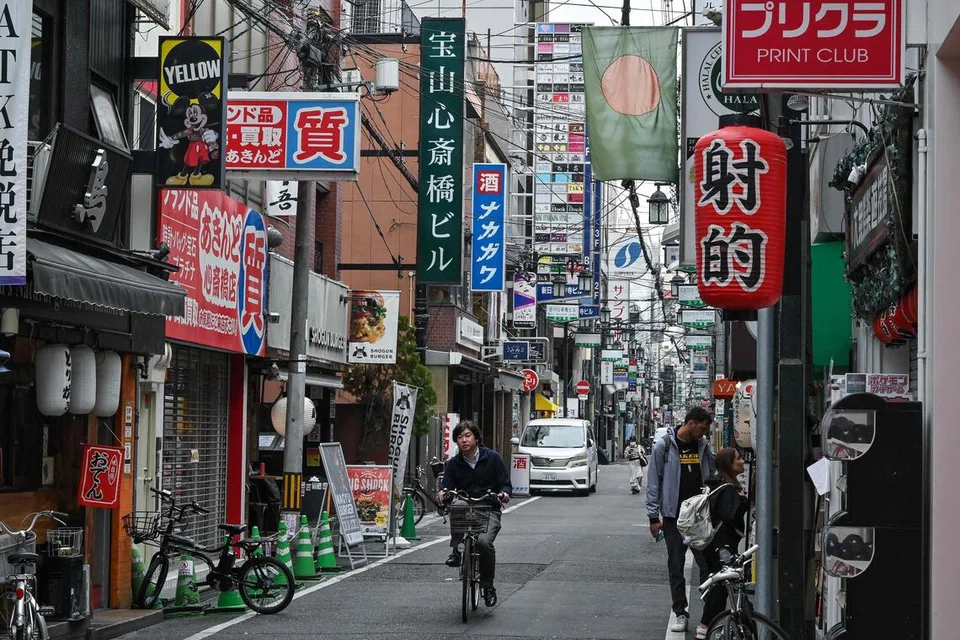Dining accessibility on the rise as restaurants cater to swallowing disorders

An increasing number of restaurants in Japan are offering meals designed for individuals with dysphagia, a swallowing disorder that makes eating and drinking difficult.
This movement has been warmly welcomed not only by those affected but also by their families, who see it as an opportunity to reclaim the joy of dining out together.
Tonden Holdings Ltd., which operates 95 Japanese restaurants in Hokkaido—the country’s northernmost main island—as well as in Tokyo and the neighboring prefectures of Kanagawa, Chiba, Saitama and Gunma, is one restaurant group that has introduced meals for people with swallowing difficulties.
In May, the company hosted a special tasting event in Kanagawa to showcase its dysphagia-friendly menu.
Among the participants was an 11-year-old boy in a wheelchair who has a brain disorder. Accompanied by his mother, he eagerly tried the modified dishes.
As he enjoyed a serving of tempura, his mother recalled how he smiled broadly and tapped his plate repeatedly, signaling that he wanted more. For her, it was a moving reminder of how much pleasure a well-prepared meal can bring, even to someone facing serious challenges with eating.
Varying severity
Dysphagia refers to difficulty swallowing food or liquids. While it is most common among older adults, it also affects a significant number of children and younger people with illnesses or disabilities.
The severity of dysphagia varies, so diets must be carefully adjusted. Some meals are made gelatinous to ease swallowing, while others are prepared soft enough to be crushed with the tongue.
At Tonden’s event, dishes were designed for people with mild dysphagia who can chew using the gum ridge. Examples included shrimp and mushroom paste molded and fried as tempura, and bite-sized sushi made from minced tuna with chopped green onions, topped with salmon roe on small balls of vinegared rice.
Tonden began offering a dysphagia-friendly set meal in June, priced at 2,409 yen ($15) and available at all of its restaurants. The set featuring sushi and tempura, tailored for safe swallowing, quickly drew interest from elderly customers.
A company representative explained, “We want to give people opportunities to enjoy meals with their families, even if aging or illness weakens their swallowing ability.”
This initiative reflects a broader need in Japan, where the number of people with swallowing difficulties is expected to rise in tandem with the country’s rapidly aging population.
Even the young
Yet dysphagia is not limited to the elderly. Younger people suffering from oral cancer, neurological conditions or the aftereffects of strokes also face significant restrictions in their daily lives.
For many, eating out is nearly impossible. Few restaurants offer suitable menu options, and individuals often have to puree or mash food themselves, which can be time-consuming and isolating.
Recognizing these challenges, local efforts to promote dysphagia-friendly dining are spreading.
In Tsuruoka, Yamagata Prefecture, a group of health-care professionals and chefs launched an initiative in 2018 to support restaurants in creating modified meals using local ingredients.
Their work began after repeated inquiries from restaurateurs interested in serving people with swallowing difficulties but unsure how to prepare appropriate dishes.
Thanks to this collaboration, seven restaurants in the city, including French and Italian establishments, now serve dysphagia-friendly cuisine.
Group member Rikako Seo said, “We hope that people who have given up traveling because of their condition can come to Tsuruoka and enjoy our rich food culture.”
On a national scale, efforts to improve access to information are also underway.
In 2015, Haruka Tohara, a professor of dysphagia rehabilitation at the Institute of Science Tokyo, launched a website compiling resources for patients, families and caregivers. The site provides details about medical institutions specializing in swallowing disorders and lists approximately 90 restaurants across Japan that offer dysphagia-adapted meals.
Tohara emphasizes that expanding dining options has broader benefits, saying, “An increase in restaurant options for older and ill individuals should encourage them to go out and help improve both their physical and mental well-being.”

















